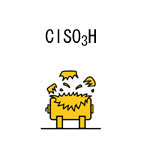| Case Name |
Rupture of a chlorosulfonic acid tank due to pressurizing |
| Pictograph |

|
| Date |
February 22, 1988 |
| Place |
Kawasaki, Kanagawa, Japan |
| Location |
Oil terminal |
| Overview |
Chlorosulfonic acid liquid was unloaded from the ship with a pressurization method to a land tank. As unloading came to the end, the upper part of the tank ruptured and gas spouted out. Since the judgment to stop the transfer depended on intuition of only a member of the crew, key judgments of closing of the two valves on the ship and land delayed, and thus delayed stopping of pressured air, which resulted in the pressure in the tank rising. Liquid transfer should be monitored on both sides of the ship and land. The system should be duplicated to detect the change of liquid transfer pressure as well as to close the valves once a change is detected. |
| Incident |
Chlorosulfonic acid was unloaded from a tanker into a tank on land by pressurizing the tank on the tanker using an air compressor. As unloading came to the end, the upper part of the land tank ruptured and gas spouted out. Refer to Fig2. |
| Processing |
Storage |
| Process Flow |
Fig2.Unit process flow
|
| Substance |
Chlorosulfonic acid, Fig3 |
| Type of Accident |
Rupture, leakage |
| Sequence |
14:10. on August 22nd. Land staffs started preparations for unloading.
14:30. The tanker carrying chlorosulfonic acid arrived at the jetty.
14:40. Unloading of chlorosulfonic acid into the land tank started. No abnormality was observed either on the tanker or on the land tank.
17:00. Unloading was completed. The sound of an explosion and white vapor from the chlorosulfonic acid tank were recognized. A staff who rushed from the office to the site found that the tank had opened and gas spouted out. Unloading was carried out not with a pump but with transfer using compressed air. |
| Cause |
Delayed closing of the block valve of the tanker's tank, as well as the first valve of the land tank on an unloading line resulted in air for transportation flowing into the cone roof tank. Slightly excessive pressure opened the relatively fragile joint section between the roof and the side wall. Work to close valves was supposed to be carried out on the tanker as well as on the land after a member of crew confirmed that the air entered a hose connecting the tanker's tank with the land tank for unloading. In fact, the air compressor automatically stops if the liquid volume in the hold decreases below five cubic meters. Nevertheless, delayed valve operations cause high pressure in the land tank because the transferring pressure is 0.46 MPaG. |
| Response |
Contents of the land tank were transferred. |
| Countermeasures |
Liquid transportation should be monitored on both sides of the ship and land. The system should be duplicated to detect changes in liquid transfer pressure and then to close the valves. |
| Knowledge Comment |
The cone roof tank has neither positive nor negative resisting pressure. It should be considered to break away under slight pressure. Therefore, air for pressurization should never be transported in the tank, and the safety system should be multiplexed to avoid rupture. |
| Background |
1. All judgments and instructions on stopping transfer or closing valves were decided only by intuition of the ship's crew.
2. The cone roof tank is basically unable to withstand any pressure. Adopting an air compression method for transfer to the cone roof tank may indicate a lack of understanding of the danger. |
| Incidental Discussion |
The cone roof tank has a structure with a weak joint section between the tank roof and the side wall to avoid complete destruction (pressure-proof structure). Its roof is like a hat put on a tank. The maximum pressure the tank can withstand almost the same as that of a 100 mm water-column. Unloading by pressurization to a cone roof tank means taking a great risk of accident from the beginning. Using pumps is recommended. |
| Reason for Adding to DB |
Example of burst caused due to insufficient operation management |
| Scenario |
| Primary Scenario
|
Poor Value Perception, Poor Safety Awareness, Inadequate Risk Recognition, Ignorance, Insufficient Knowledge, Insufficient Study/Experience, Planning and Design, Poor Planning, Poor Design, Regular Operation, Erroneous Operation, Delay of Operation, Failure, Large-Scale Damage, Rapture, Secondary Damage, External Damage, Leakage
|
|
| Sources |
Kawasaki City Dangerous objects safety research association. Accident case that is useful at present. Accident examples with dangerous facilities. (with FTA). pp.230-232(1997)
Kawasaki City Fire fighting station, Prevention division, Peace section. Outline of accident of dangerous material outdoor tank rupturing at R industry Co., Ltd. T office K oil terminal. Material of the Kawasaki City Complex safety countermeasure committee.
|
| Physical Damage |
An oil tank ruptured. The tank's whole roof swelled; the weld line cracked, opened, and was considerably deformed. The welded joint section between the tank roof and the side wall was partially damaged and opened. Parts of the tank roof as well as the side wall were deformed. Some chlorosulfonic acid leaked. |
| Multimedia Files |
Fig3.Chemical formula
|
| Field |
Chemicals and Plants
|
| Author |
WAKAKURA, Masahide (Kanagawa Industrial Technology Research Institute)
TAMURA, Masamitsu (Center for Risk Management and Safety Sciences, Yokohama National University)
|